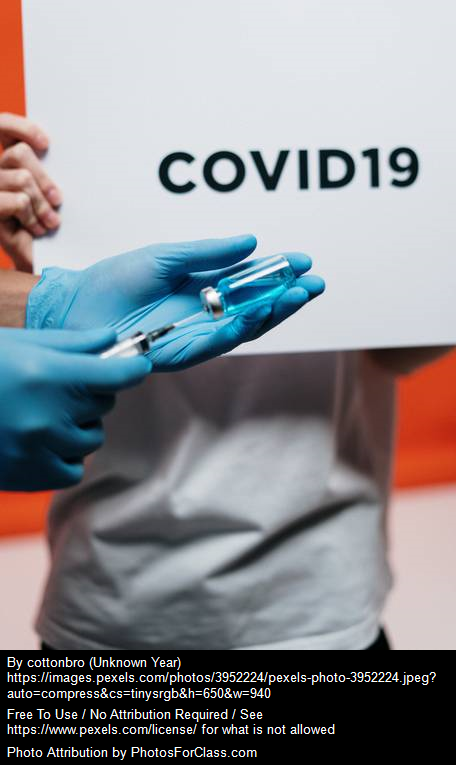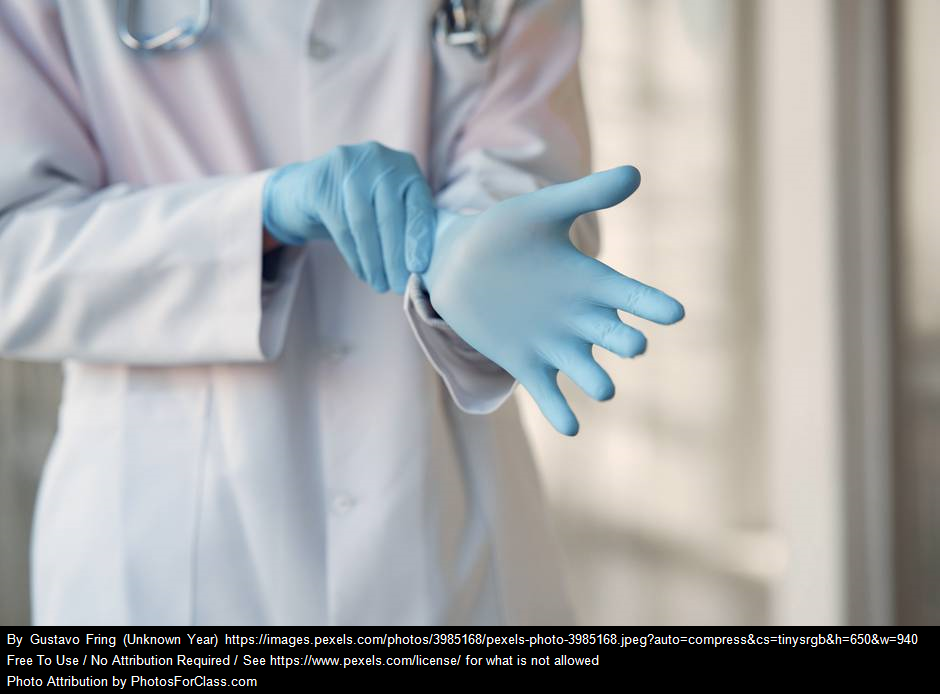Blog by Swati Joshi
 As a Medical Humanities researcher, I have always wondered how we learn about our body through language and how our anatomy forms the metaphorical elements of the linguistic corpus. This piece attempts to map the transformation in our understanding of hands in the face of the pandemic of COVID-19. Language has played an important role in reifying, in our collective consciousness, the role of hands involved in strengthening bonds. For instance, phrases like lend me a hand, all hands on deck, in safe hands, know like the back of your hand, lay hands on, healing hands, etc. imply how language portrays hand as a symbol for help, teamwork, security, knowledge, benediction, and healing respectively. And just as the symbolic significance of hands is perceived through language; hands, too, have a tactile language of their own. Haptic language cuts across various institutions of society like religion, medicine, family, etc. In the religious context, it acts as a medium to connect Divinity with humanity, in the form of laying on of hands to convey blessings. Iain Gardener mentions Mani, who was not only the founder of the ancient religion called Manichaeism, but also the “‘doctor from Babylon’… endowed with the gift of ‘the of laying-on of hands’ (cheirothesia) as a healing technique as well as an act of ordination” (2020, xiii). In the social milieu, the tactile signs of a friendly pat on the back, or a handshake have been seen as a comforting agent that convey the feelings of warmth, companionship, trust, and appreciation. Just as haptic language plays a crucial role in cementing the relationships in the non-medical context, in a similar manner it bolsters faith in the doctor-patient relationship. Nonetheless COVID-19 has brought in the moment of Derridean “rupture” (1978, 351) in our understanding of the hands through language and the language of hands.
As a Medical Humanities researcher, I have always wondered how we learn about our body through language and how our anatomy forms the metaphorical elements of the linguistic corpus. This piece attempts to map the transformation in our understanding of hands in the face of the pandemic of COVID-19. Language has played an important role in reifying, in our collective consciousness, the role of hands involved in strengthening bonds. For instance, phrases like lend me a hand, all hands on deck, in safe hands, know like the back of your hand, lay hands on, healing hands, etc. imply how language portrays hand as a symbol for help, teamwork, security, knowledge, benediction, and healing respectively. And just as the symbolic significance of hands is perceived through language; hands, too, have a tactile language of their own. Haptic language cuts across various institutions of society like religion, medicine, family, etc. In the religious context, it acts as a medium to connect Divinity with humanity, in the form of laying on of hands to convey blessings. Iain Gardener mentions Mani, who was not only the founder of the ancient religion called Manichaeism, but also the “‘doctor from Babylon’… endowed with the gift of ‘the of laying-on of hands’ (cheirothesia) as a healing technique as well as an act of ordination” (2020, xiii). In the social milieu, the tactile signs of a friendly pat on the back, or a handshake have been seen as a comforting agent that convey the feelings of warmth, companionship, trust, and appreciation. Just as haptic language plays a crucial role in cementing the relationships in the non-medical context, in a similar manner it bolsters faith in the doctor-patient relationship. Nonetheless COVID-19 has brought in the moment of Derridean “rupture” (1978, 351) in our understanding of the hands through language and the language of hands.
COVID-19 has acted as a catalyst for setting a novel language that portrays hands as agents of contagion. The tactile communication that was viewed as instrumental in releasing the “oxytocin” (Berger 2007, 42) or popularly known as the happy hormone/love hormone in the brain, is now considered a threat. In the pre-COVID era hands played a vital role in augmenting proximity between people through embracing or holding each other’s hands. Whereas in the present COVID-19-swaddled times, hands are used as units of measurement to maintain social distance. The advertisements promoted by various government and non-government organizations (at the provincial, national, and international level) on the radio, television, newspapers, and internet emphasize the act of washing hands, sanitizing hands, etc. to prevent the infection. Nevertheless, the constant repetition of phrases like washing hands, rubbing hands, keep your hands away from the surface, stay two hands away from each other, etc. have metamorphosed our understanding of hands. In the present times, bare hands are observed as the source of contagion guilt. Therefore, along with washing hands the emphasis is also laid on hands being gloved before touching surfaces, epidermal or non-epidermal.
Hands that were seen as healers are now presented, through media, as messengers of the virus. And this has impacted the medical scenario adversely. In a time when it is difficult to locate the asymptomatic COVID-19 patients, staying off touch seems the only way that could keep the medical caregivers from contracting the infection. Doctors are forced to take stringent precautions while examining patients to protect them from contracting nosocomial infection. One doctor in India, having recovered from COVID-19, introduced a mechanism of setting up a curtain between themselves and the patient in order to curb the spread of infection. But this haptic silence adopted by certain medical practitioners might affect the patients in the coming days. This is because tactile communication has played an antinociceptive role in healthcare.
The biomedical model of healthcare is known for its heavy reliance on the mathematical precision of machines. But it is important to understand that touch has its own significance in healthcare. In fact, it is the touch that strengthens the bond between the patient and the medical caregiver, whichis of utmost importance in facilitating the voicing out of illness narratives. James Aho and Kevin Aho (2009) state that with the invention of stethoscope the accuracy of auscultation helped the medical professionals in diagnosing the ailments, but on the other hand the same instrument that helped doctors listen to the rhythm of the heart beats, was responsible for silencing the illness narratives, effectively muting patient voices (Aho and Aho 2008, 79). Owing to the COVID-19 crisis, this alienation has doubled since gloves and curtains have intensified the barriers. Therefore, the patients might seem to experience lack of care during their care, in the absence of the tactile communication with their medical caregivers.
This brings us to the titular question, what are the mechanisms at our hands to cope with the situation in the absence of tactile care? For a Chennai hospital, the answer was deploying robots to serve meals and medicines to the patients admitted to the COVID-19 ward. It can be inferred that these robots serve the dual purpose of safeguarding the medical caregivers as well as giving the indirect tactile care to the COVID-positive patients. And this is not a singular case: Indian newspapers have covered the stories of many hospitals using robots for delivering indirect tactile care.
 Thus, we can expect to see an interpretative shift with regards to hands and touch that has transformed the patterns of caregiving in the medical set-up. Moreover, it is important to note that the way we interpret the functionality of hands now will affect its representation in Literature and Fine Arts. For instance, the 20-feet tall statue that is built in Latvia to honour the frontline health workers is masked and gloved. On the one hand, it is commendable to see the efforts and selfless care offered by the frontline health workers being honoured, but on the other hand it is important to note how the image of COVID-19 medical caregivers is getting documented through the arts. The statue of the doctor with gloved hands is the artistic archive narrating the aspect of the haptic silence involved in the medical care for the COVID-19 patients.
Thus, we can expect to see an interpretative shift with regards to hands and touch that has transformed the patterns of caregiving in the medical set-up. Moreover, it is important to note that the way we interpret the functionality of hands now will affect its representation in Literature and Fine Arts. For instance, the 20-feet tall statue that is built in Latvia to honour the frontline health workers is masked and gloved. On the one hand, it is commendable to see the efforts and selfless care offered by the frontline health workers being honoured, but on the other hand it is important to note how the image of COVID-19 medical caregivers is getting documented through the arts. The statue of the doctor with gloved hands is the artistic archive narrating the aspect of the haptic silence involved in the medical care for the COVID-19 patients.
Haptic language is inherently embedded in the act of medical and non-medical caregiving, butthe COVID-19 pandemic has sundered our understanding of haptic language. In medical caregiving, gestures like taking the pulse with the fingers, the administration of medicines to the bed-ridden patients, helping the patients to get up from the bed, holding the patient’s hand to comfort during the painful injection procedure, and many others employ haptic language to communicate medical care to the patients. In the non-medical set-up, haptic language plays an equally essential part in strengthening the relationships. Nonetheless, COVID-19 has effectuated haptic silence as the novel definition of caregiving, thereby engendering the notion of maintining distance as performing care. With the constant consumption of the cultural understanding of sanitized and/or gloved hands as a standard for measuring the physical distance between two individuals by the mass, there has been a paradigm shift in the understanding of hands through language and the understanding of the language of hands.
Swati Joshi is pursuing her doctoral studies in Medical Humanities at Indian Institute of Technology at Gandhinagar. Prior to joining her PhD, she worked as a Lecturer of English Literature at St. Xavier’s College, Ahmedabad.
References
Aho, James, and Kevin Aho. Body Matters: A Phenomenology of Sickness, Disease, and Illness. Plymouth: Lexington Books, 2009. Print.
Berger, Phyllis. “The Placebo Effect and Alternate Treatments.” The Journey to Pain Relief: A Hands-On Guide to Breakthroughs in Pain Treatment. Alameda: Hunter House Inc., 2007. 37-48. Print.
Derrida, Jacques. “Structure, Sign, and Play in the Discourse of the Human Sciences.” Writing and Difference. Trans. Alan Brass. London: Routledge, 2002. 351-370. Print.
Gardner, Iain. The Founder of Manichaeism: Rethinking of the Life of Mani. Cambridge: Cambridge University Press, 2020. Print.
Kelly, Caitlin. “The Importance of Medical Touch.” The New York Times. The New York Times Company, 8 Oct. 2018. Web. 26 Jun. 2020.
“Doctor adopts ‘no touch, no contact’ line to examine patients.” Deccan Herald. PTI, 18 May. 2020. Web. 24 Jun 2020.
“Covid-19: Robots to deliver food and medicines to patients at Chennai Hospital.” The Economic Times. Bennet, Coleman & Co. Ltd., 7 Apr. 2020. Web. 24 Jun. 2020.